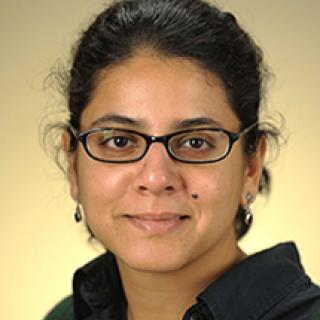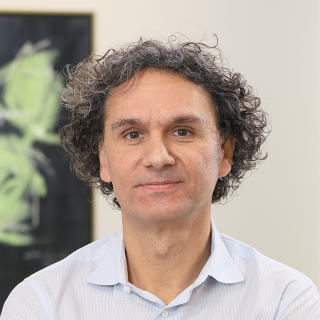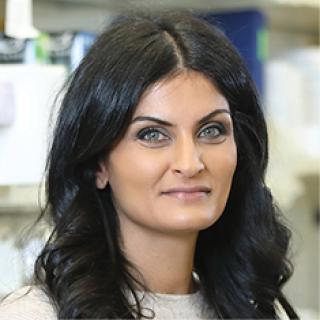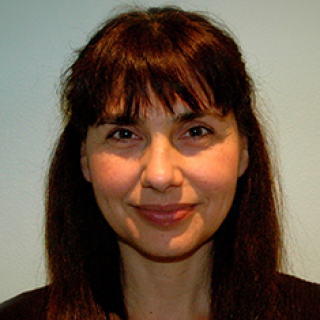Laboratory of Receptor Biology and Gene Expression
Laboratory of Receptor Biology and Gene Expression
About
The research program in the Laboratory of Receptor Biology and Gene Expression concerns the elucidation of mechanisms involved in the regulation of genetic expression in eukaryotic cells, the architecture and organization of the mammalian nucleus, and the identification of genes and regulatory processes involved in modulated states of expression during oncogenesis. The lab includes six internationally recognized research groups, headed by senior investigators Tom Misteli, Yamini Dalal, Shalini Oberdoerffer, Daniel Larson, and Gordon Hager, and tenure track investigator Efsun Arda.
The Hager group utilizes members of the nuclear receptor family as models to study features of chromatin reorganization, nuclear domain structure, and real time dynamics of nuclear proteins. Genome wide methodologies are coupled with live cell microscopy techniques to integrate findings from both cell population and live single cell studies in a comprehensive view of real time regulatory processes.
Dr. Misteli utilizes highly sophisticated live-cell microscopy techniques, coupled with molecular level methods, to understand how genomes are organized in mammalian cells. He also studies the progressive dysfunction of genome organization in the development of disease states, and in physiological processes such as aging. His work has led to several important advances in our understanding of the eucaryotic nucleus.
Yamini Dalal focuses on the study of chromatin structure at multiple levels, including genome wide and single molecule, to understand mechanisms involved in mis-regulation of nucleoprotein structure and their role in cancer development. She employs a wide variety of high end methodology, including AFM microscopy, computational modeling, genetics, and genome wide approaches.
Dr. Oberdoerffer’s laboratory studies the role of DNA and RNA primary covalent modifications in mechanisms of gene regulation. She discovered a major linkage between methylation of cytidine in DNA and pre-mRNA splicing, and has followed with penetrating studies on this important mechanism. More recently, she has extended her interests to mechanisms of RNA modification, and identified an unexpected link between acetylation of cytidine in processed mRNA and protein translation.
Dan Larson addresses fundamental mechanisms of gene regulation in eukaryotic cells from a rigorous biophysical point of view. He utilizes a variety of advanced imaging methodologies, coupled with conventional molecular techniques, to develop extensive live and fixed cell datasets. These approaches, in combination with computational modeling, have led to novel concepts in gene regulation.
The Arda group is focused on the delineation of gene regulatory networks that control the development, expansion and function of human pancreatic cells. Diabetes and pancreatic cancer are both major diseases widespread in the world population. Dr. Arda utilizes genomic approaches in primary human cells, combined with genome-editing technologies to build comprehensive maps of pancreatic regulatory elements, and characterize human pancreatic cell lineages. This information will be critical to a mechanistic understanding of pancreatic disease.
The laboratory also organizes and directs two major microscopy cores. The LRBGE/NCI Optical Microscopy Core, directed by Tatiana Karpova. specializes in live cell imaging, image deconvolution and microscopy quantification methods such as FRET and FRAP. This facility brings several state of the art optical methods to the community, including single molecule tracking, wide field microcopy, super-resolution techniques, and Lattice Light Sheet microscopy. The High-Throughout Imaging Facility (HiTIF), headed by Dr. Pegoraro, provides CCR investigators with the expertise and the technology needed to implement high-content imaging (HCI) assays. Applications include high-throughput siRNA and chemical compound screens. The HiTIF also applies HCI to quantify rare events in heterogeneous populations of cells.
Job Vacancies
We have no open positions in our group at this time, please check back later.
To see all available positions at CCR, take a look at our Careers page. You can also subscribe to receive CCR's latest job and training opportunities in your inbox.
News
Learn more about CCR research advances, new discoveries and more
on our news section.
Contact
Contact Info
Center for Cancer Research National Cancer Institute
- Building 41, Room B602
- Bethesda
- 12408587886













